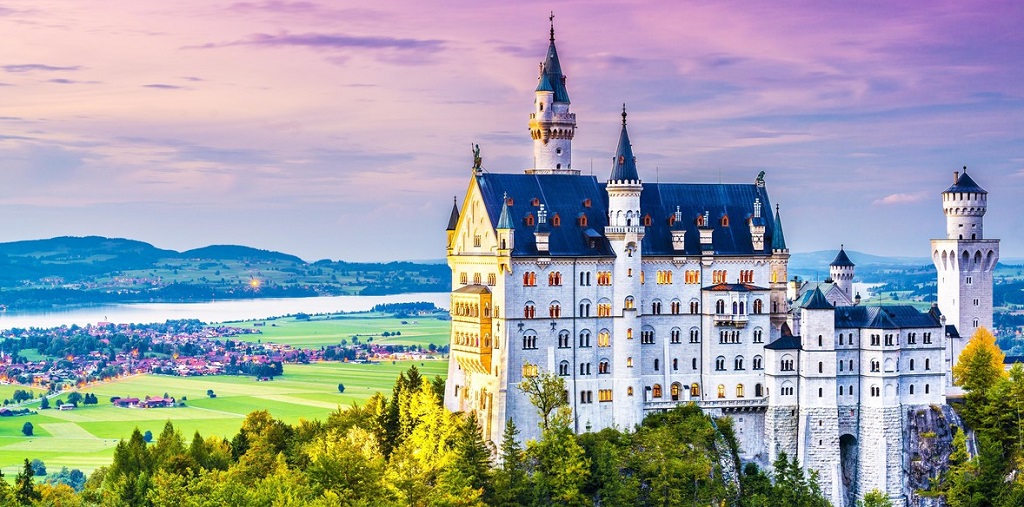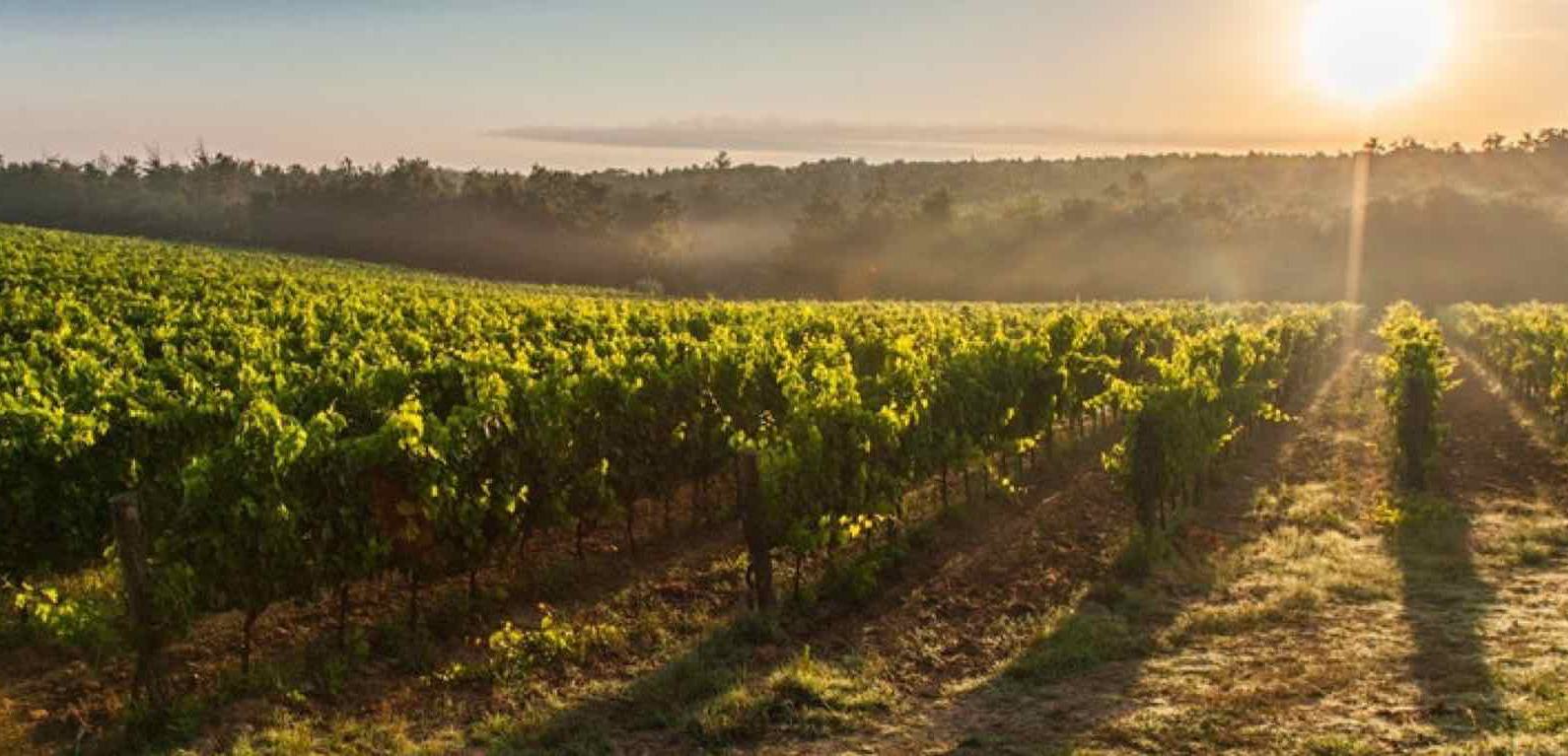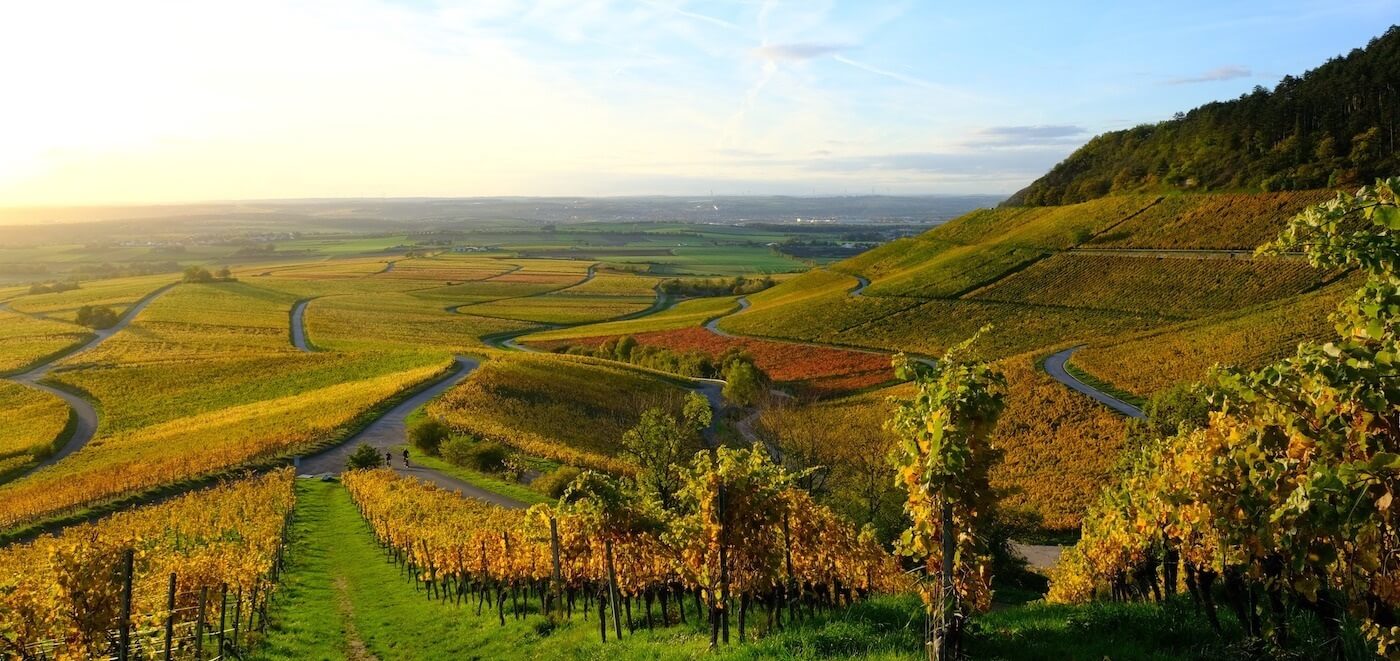
Sharing a border with nine different nations, the country of Germany at the very heart of Europe, boasts a diverse landscape of rolling hills, enchanting woodlands and crystal clear lakes overlooked by high alpine peaks and fairytale castles. In a country renowned for its industrial efficiency and precision, the German wine industry is a well oiled machine which over the past three decades has developed a reputation for producing some of the world’s finest, aromatic white wines.

As with most of the neighbouring nations, the first reference to wine in Germany dates back to the first century, around the town of Trier in the southwest of the country. Initially a simple case of Romans making wine for their own consumption, the practice quickly developed and spread to other regions. During the Middle Ages, Cistercian and Benedictine monks were particularly influential in developing quality-focused viticulture, and some of the properties established as monasteries back then, are amongst the nation’s most celebrated wine estates today. Various changes in law have led to many vine parcels being divided and hence vineyards across the country are noticeably small, but the most prestigious wineries still hold enough land to produce wine for both the domestic and export markets. Germany’s cool, continental climate presents a number of challenges to the country’s winemakers. The unpredictable weather and cooler temperatures of this northern latitude mean that vineyard sites must be carefully selected and viticultural activity very closely managed. Most of Germany’s key winemaking sites occupy steep slopes with a south / southwestern aspect, and almost all are located in close proximity to one of the country’s river systems, this having the effect of moderating temperatures. Soils of limestone, clay and slate, depending on location, complete the country’s terroir. Today, there are thirteen official wine regions in Germany of which [Rheinhessen](/region/rheinhessen) is the largest by area, and [Mosel](/region/mosel), perhaps the most prestigious. In all, the country cultivates 102,000 hectares of vineyard with more than one-hundred-and-thirty grape varieties represented. These range from obscure hybrids such as Albalonga, to well-known international varieties like [Chardonnay](/chardonnay) and [Pinot Noir](/pinot-noir) (referred to here by the alias [Spätburgunder](/spatburgunder)). [Riesling](/riesling) though, is the country’s signature grape, a variety synonymous with the steep vineyards that cling to the banks of the Moselle river, where it delivers elegant, crisp and fragrant wines of real character. Germany remains predominantly a white wine nation, however in response to an increase in domestic demand towards the end of the twentieth century, red wines now account for more than one third of the country's production. Whilst German wine has a mixed reputation around the world, this is largely on account of its association with the cheap, semi-sweet blends such as Liebfraumilch, which dominated production in the 1970s and 1980s. However, those in the know have long forgotten about this blot on the nation’s wine copybook, and instead choose to savour the distinctive, aromatically pure and refreshingly crisp taste of a [Mosel](/region/mosel) [Riesling](/riesling) or herald the country's growing reputation for reds.

One of Germany's smallest and indeed coolest wine regions, the Ahr Valley has made a name for itself with Pinot Noir, or Spätburgunder as it is known in
Read more ▸
Located in the South West of Germany, the Baden region is home to some truly excellent wines. One of the largest in the country, Baden is divided into nine Bereiche.
Read more ▸
Franconia, or Franken, as it is also called, is home to some interesting white wines, many of which are made from Sylvaner and Müller-Thurgau due to the region's continental climate. Many of t...
Read more ▸
Hessische Bergstraße is the smallest wine region in Germany and takes its name from an old Roman trade route that runs through a beautiful landscape of rolling hills and vineyards. Riesling a...
Read more ▸
Easily the most famous wine region in Germany, the Mosel Valley is home to some of the world's greatest Rieslings.
Read more ▸
Nahe is known for its diverse range of white wines from small estates, particularly from Riesling. Located between the Mosel Valley and Rheinhessen, the region e...
Read more ▸
The Pfalz, also referred to by its English name Palatinate, is the second-largest and one of the most important wine-producing regions in Germany. With 23,500 hectares of vineyards, only the
Read more ▸
The Rheingau might be one of Germany’s smallest regions but it is also one of the most important. The area, just across the river Main from Rheinhessen is home to some of the best ...
Read more ▸
The wines of the Rheinhessen are improving each year and now represent some of Germany’s most interesting wines. Riesling is the star candidate, but there is a growing wave of high quality
Read more ▸
Saale-Unstrut is Germany's most northern wine region. With around 650 hectares planted, often on steep south facing terraces, the area is known for its white wines from the Müller-Thurgau
Read more ▸
Saxony, or Sachsen in Germany, is one of the country’s smallest wine regions. Located around the city of Dresden and close to the Czech border, it is famed for
Read more ▸
Württemberg is a wine region located in southwest Germany known for its red wine production, particularly from Trollinger and Lemberger. Key winemaking villages inc...
Read more ▸